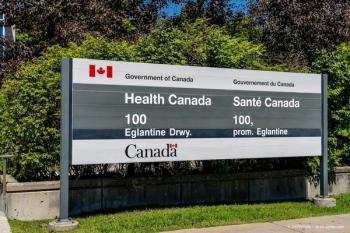
VEGF Trap promising for neovascular AMD
VEGF Trap (Regeneron Pharmaceuticals) has been seen in two studies (CLEAR-IT AMD 1 and CLEAR-IT AMD 2) to be safe, bioefficacious, and tolerated in the eyes of patients with neovascular age-related macular degeneration.
VEGF Trap (Regeneron Pharmaceuticals) has been seen in two studies (CLEAR-IT AMD 1 and CLEAR-IT AMD 2) to be safe, bioefficacious, and tolerated in the eyes of patients with neovascular age-related macular degeneration. The 2- and 4-mg doses demonstrated more bioactivity than lower doses evaluated, according to Quan Dong Nguyen, MD.
The CLEAR-IT AMD 1 study evaluated six doses of VEGF Trap (0.05, 0.15, 0.5, 1, 2, or 4 mg) with each patient receiving one intravitreal injection of one dose and then followed for 6 weeks, reported Dr. Nguyen, assistant professor of ophthalmology, Wilmer Eye Institute, Johns Hopkins University School of Medicine, Baltimore.
Twenty-eight patients then received one intravitreal injection of either 0.15 or 4 mg and were followed for 8 weeks. Investigators found that the injections in both parts of the study were well tolerated and no ocular inflammation developed. The retinal thickness decreased in the second part of the study, and the treatment duration was longer with administration of the higher dose, he said.
In the CLEAR-IT AMD 2 study, the patients were randomized into five groups and the following VEGF Trap doses were evaluated: 0.5 mg every 4 weeks, 2 mg every 4 weeks, 0.5 mg every 12 weeks, 2 mg every 12 weeks, and 4 mg every 12 weeks.
Analysis of 159 patients indicated that "overall there was a reduction in the central retinal thickness across all time points for 8, 12, and 16 weeks," Dr. Nguyen said. There was also a gain in visual acuity at all time points.
When the investigators evaluated the subgroups for efficacy, administration of 0.5 mg every 4 weeks and 2 mg every 4 weeks resulted in the greatest gains in visual acuity and the greatest reductions in the central retinal thickness at 12 weeks after treatment. Improvement continued at the 16-week evaluation. At week 12, there was no evidence of any ocular or systemic complications.
Dr. Nguyen concluded that VEGF may play a role in the armamentarium of therapy for choroidal neovascularization. He also noted that these results aided the design of the phase III trial in which 0.5 mg for 4 weeks, 2 mg for 4 weeks, 2 mg for 8 weeks, and 0.5 mg of ranibizumab (Lucentis, Genentech) for 4 weeks will be evaluated.
Newsletter
Get the essential updates shaping the future of pharma manufacturing and compliance—subscribe today to Pharmaceutical Technology and never miss a breakthrough.















































